La ville d'eau de Zhujiajiao - Billets, heures d'ouverture, points forts et conseils
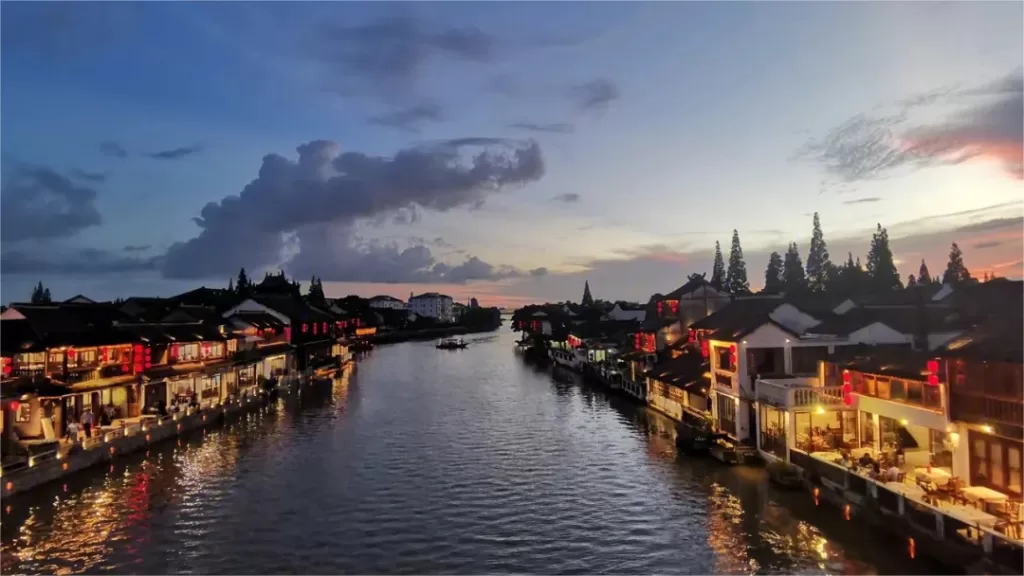
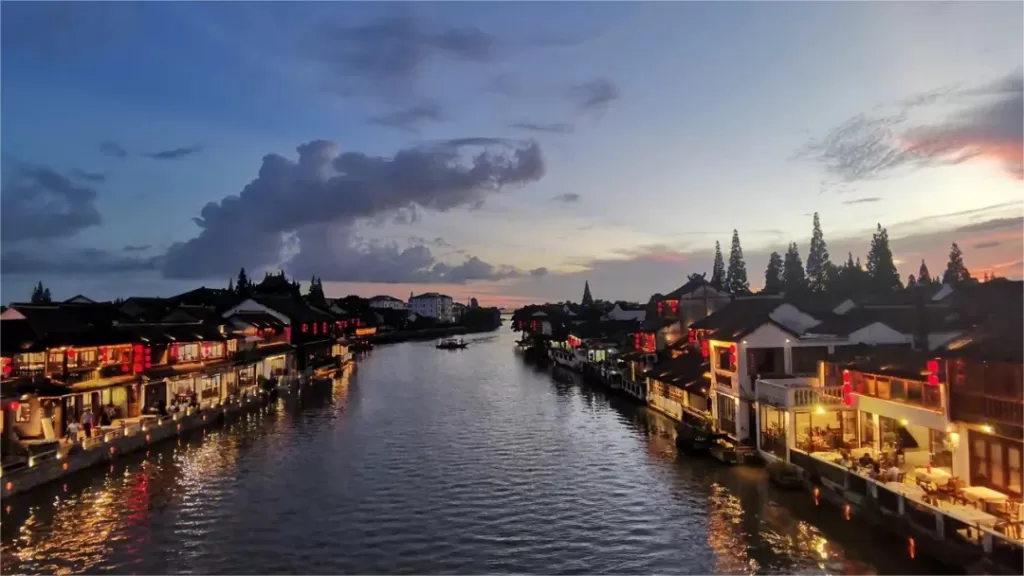
Zhujiajiao Water Town (朱家角水镇, 朱家角古镇, Zhujiajiao Ancient Town) is a charming water town located in the Qingpu District of Shanghai, China. It is known for its picturesque scenery, ancient architecture, and traditional culture. Zhujiajiao is often referred to as the “Venice of Shanghai” because of its intricate network of canals, bridges, and narrow streets.
The town dates back more than 1,700 years and was an important trading hub during the Ming and Qing dynasties. Visitors can explore historical landmarks such as the Kezhi Garden, which features classic Chinese architecture and beautiful landscaped gardens, as well as the Zhujiajiao Ancient Street, lined with shops selling traditional crafts, snacks, and souvenirs.
One of the town’s main attractions is the boat ride along the canals, which provides a unique perspective on the town’s architecture and daily life. Other popular activities include trying local delicacies like sesame cakes and rice wine, and watching performances of traditional Chinese music and dance.
Table des matières
- Informations de base
- Localisation et transport
- History of Zhujiajiao Water Town
- Highlights of Zhujiajiao Water Town
- Vlog about Zhujiajiao Water Town
- Conseils utiles résumés à partir d'études
- Autres villes anciennes de Shanghai
Informations de base
| Durée estimée de la visite | Plus de 3 heures |
| Heures d'ouverture | 24 heures par jour |
| Prix du billet | The town itself is free, but you have to pay to visit various attractions. The combination ticket costs from 40 to 80 RMB, depending on the number of attractions it covers. |
| Numéro de téléphone | 0086-021-59240077 |
Localisation et transport
Zhujiajiao is located in the Qingpu District of Shanghai, China, about 48 kilometers (30 miles) west of downtown Shanghai. The town is situated on the banks of the Dianpu River, which flows through the center of the town and connects to a network of canals that crisscross the area. To get there, you can choose the following ways:
Métro : Take subway line 17, get off at Zhujiajiao Station (朱家角), and walk about 200 meters to the north to reach the town.
Bus : There is no direct bus leading to Zhujiajiao from the City Center of Shanghai. So I highly recommend you choose the subway.
History of Zhujiajiao Water Town
Zhujiajiao is a town with a rich history that dates back over 1,700 years. According to historical records, the town was first established during the Three Kingdoms period (220-280 AD) and became an important trading hub during the Ming (1368-1644) and Qing (1644-1912) dynasties.
During this time, Zhujiajiao was a major center for agriculture, handicrafts, and silk production. The town was known for its intricate network of canals, which were used to transport goods and materials. The canals also served as a defense mechanism against invading armies.
The town’s name, “Zhujiajiao,” means “Zhu Family Village” in Chinese, and refers to the prominent Zhu family who was wealthy landowners in the area. The family played an important role in the development of the town, and many of their ancestral halls and gardens can still be seen today.
Zhujiajiao also played a role in the development of Chinese literature and culture. The town was home to several famous scholars and poets, and was a popular setting for literature and poetry during the Ming and Qing dynasties.
Highlights of Zhujiajiao Water Town
Ponts anciens
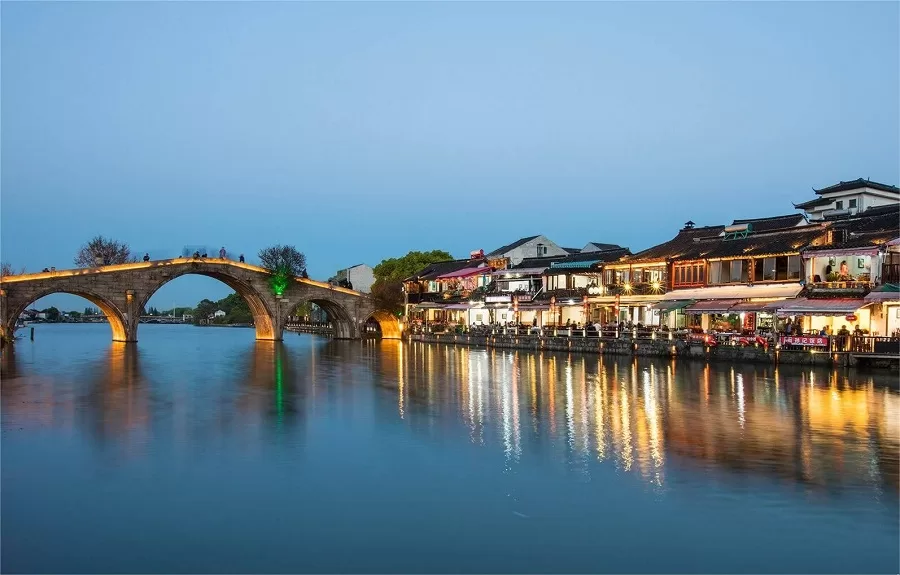
Zhujiajiao is known for its many ancient bridges, which were built during the Ming and Qing dynasties. These bridges are an important part of the town’s cultural heritage and are considered masterpieces of ancient Chinese architecture.
The most famous bridge in Zhujiajiao is the Fangsheng Bridge, also known as the “Setting-Fish-Free Bridge,” which was built during the Qing dynasty and is a popular spot for taking photos. Other notable bridges in the town include the Lang Bridge, the Zhaohe Bridge, and the Chenghuang Bridge, each with their own unique style and design.
Boat Ride
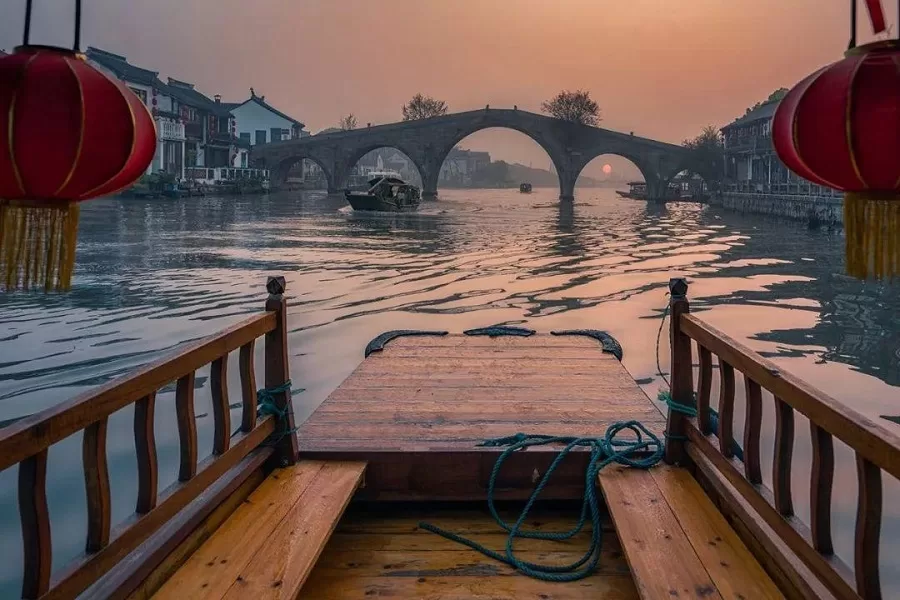
A boat ride along the canals of Zhujiajiao is one of the most popular attractions in this charming water town. Visitors can hire a boat and take a leisurely ride through the narrow canals, passing under ancient stone bridges and admiring the traditional houses along the banks.
The boat ride offers a unique perspective on the town’s architecture, allowing visitors to see the intricate details and designs of the buildings from a different angle. It is also a peaceful and relaxing way to escape the hustle and bustle of the town and appreciate the tranquility of the waterways.
Kezhi Garden and Zhuxi Garden
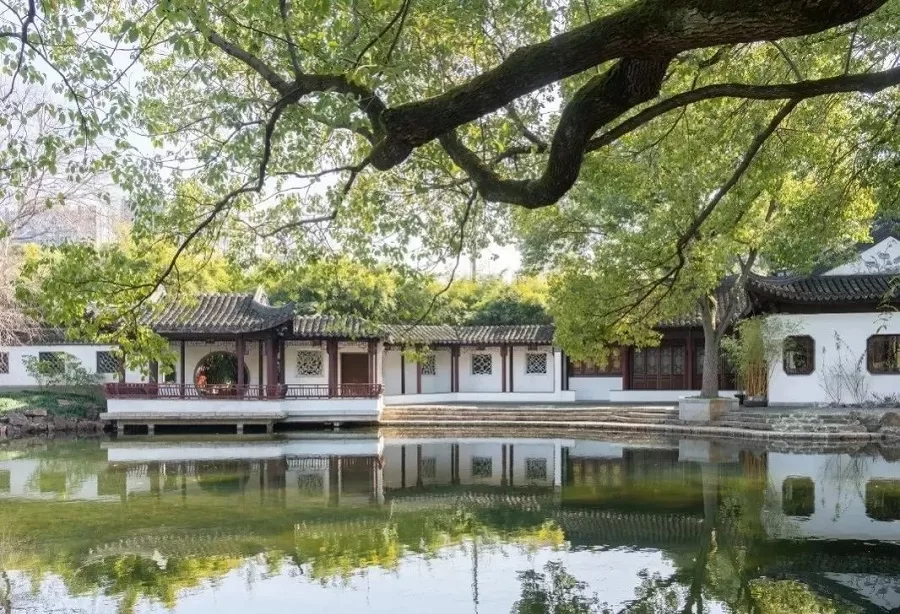
Kezhi Garden and Zhuxi Garden offer a delightful juxtaposition of historical grandeur and modern charm. Kezhi Garden, an expansive manor-style garden, spans 96 acres and was built in 1912 by Ma Wenqing. Its name, meaning “to study and cultivate,” reflects its dual purpose as a place for both scholarly pursuits and agricultural activities. The garden features a study hall, known as the Book City, and a village area named Daoxiang Village. Within its bounds are over 200 buildings, including pavilions, corridors, bridges, halls, and residences. The layout is meticulously designed, with a harmonious balance of dense and open spaces, making it a rare gem among private gardens.
In contrast, Zhuxi Garden, constructed in 1956, is a more compact and contemporary space, covering over 70 acres. Despite its smaller size, Zhuxi Garden is intricately designed and visually appealing. It is divided into three distinct sections representing spring, autumn, and winter, each with its unique charm. The garden also includes a children’s playground, a restaurant, a tea house, and various shops, making it an ideal destination for relaxation, dining, shopping, and entertainment.
Zhujiajiao Ancient Street
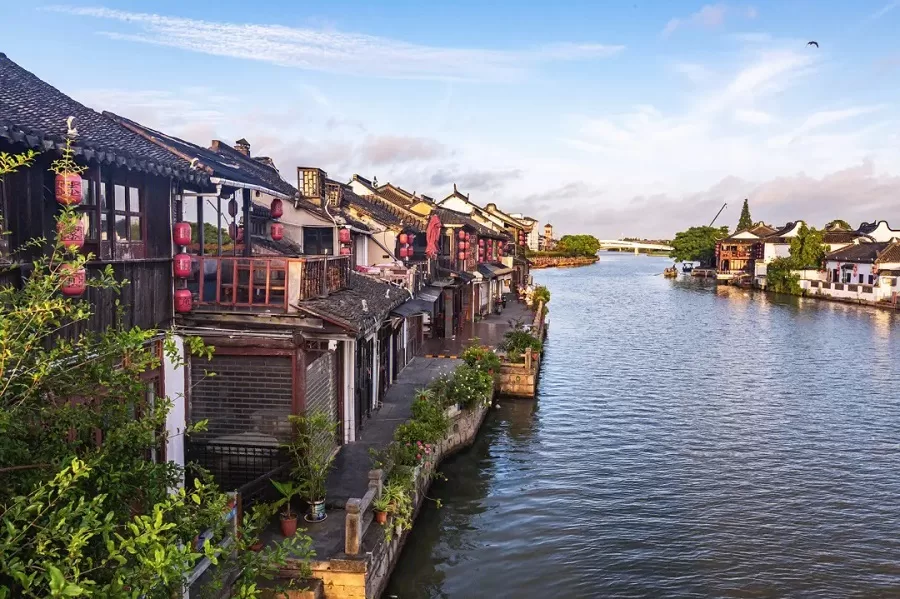
Zhujiajiao Ancient Street is a bustling marketplace located in the heart of Zhujiajiao. It is a vibrant and colorful street filled with traditional architecture, local crafts, and delicious food.
Visitors can wander through the narrow alleyways and browse through the many shops selling traditional Chinese souvenirs, snacks, and handicrafts. The street is also home to many restaurants and food stalls serving local delicacies such as sesame cakes, sweet-scented osmanthus cakes, and rice wine.
Vlog about Zhujiajiao Water Town
Conseils utiles résumés à partir d'études
Explore the Commercial Area: There is a bustling commercial area near the Fangsheng Bridge (放生桥). Here, you’ll find a wide variety of shops and stalls offering food, drinks, souvenirs, and other local specialties.
Visit Dadian Lake: After exploring Zhujiajiao, take some time to stroll around nearby Dadian Lake. The scenic views and recreational activities such as camping and water sports make it a popular destination for visitors seeking outdoor enjoyment.
Choose Window Seats for Dining: If you’re dining in Zhujiajiao Water Town, opt for a seat on the second floor by the window. This way, you can enjoy your meal while admiring the picturesque views outside, adding to the overall dining experience.
Try Famous Teahouses: Don’t miss the opportunity to visit renowned teahouses like Jiangnan First Teahouse (江南第一茶楼), featuring Pingtan performances every Saturday afternoon, and Apo Teahouse (阿婆茶楼), offering Pingtan performances daily from 14:00 to 16:00. These teahouses provide an authentic cultural experience along with delicious teas and snacks.
Consider Boat Tours: While in Zhujiajiao, you may opt for a boat tour to explore the town’s waterways. Prices typically start at around 200 yuan for a boat that accommodates up to six people. Although the boat ride may not be very long, it offers a unique perspective of the town from the water.
Evening Exploration: If you’re staying until the evening, be aware that many shops close early, often before 8:00 PM. As the night falls, the town becomes quieter, creating a serene atmosphere. The illuminated temples and buildings provide a mesmerizing sight.
Autres villes anciennes de Shanghai

Nanxiang Ancient Town

Ville ancienne de Xinchang

Ville ancienne de Qibao